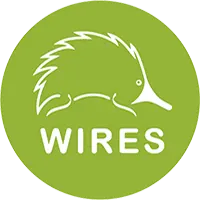Rare Eastern Pygmy-possum in care with WIRES
Monday, June 23, 2014
After waking from a temporary slumber and going in search of food, an Eastern Pygmy-possum climbed along the door frame of a home in the South of Sydney. Little did she know, that from here she would wind up in the care of long-term WIRES volunteer Tammy Lawler who has been looking after possums like this for years.
The Eastern Pygmy- possum was listed as vulnerable to extinction in 2001 by the NSW Government with the biggest threat to the species being loss of habitat. It can found on the coastal areas of NSW and populations extend to Dubbo, the Pilliga and Wagga Wagga.
Tammy Lawler of WIRES says, "I’ve looked after a few Eastern Pygmy-possums over the years, a lot more in my earlier days with WIRES as they weren’t threatened then. This is the first one since I became the co-coordinator for the Illawarra branch three years ago."
Weighing in at just 10gms and measuring a mere 5cm in body length, the Eastern Pygmy-possum was just 70days old when she came into care on 11th June 2014. Joeys can be born at anytime of the year, most are born between spring and autumn.
“They are so tiny, you just wouldn't notice them. People might think they are little mice as they only grow to 24grams. This one is 10gms now and it must reach 18 -20gms before it can be released. It would be at the stage where it is waiting in the den for her Mum to come back as they are still on milk at this stage in their life,” says Tammy Lawler
"I have looked after sugar gliders and squirrel gliders in the past and the Eastern Pygmy-possum requires similar care.
"This possum is currently receiving 2-3mls of milk from the two feeds she is given per day. One feed happens first thing in the morning and the other one at night. She is currently lapping from a tiny bottle cap. I give her a few insects in the morning too. Insects are like lollies for little possums like these.
“Eastern Pygmy-possums go into torpor at this time of year because it is cold. They basically sleep until the warmer months come along, but if the temperature gets high enough, they may come out and feed.
“It was a pretty warm day the day this possum was found. It was likely out and about looking for food," says Tammy Lawler.
The Eastern Pygmy-possum feeds on insects and the pollen and nectar of banksia, bottlebrush and some eucalypts. The species plays an important role in pollinating native heathland plants like the banksia. In areas where flowers are few, insects make up a large part of their diet.
They are very agile climbers and their body will grow up to 11cm in length, and their tail that is sometimes used for gripping, can be up to 10cm in length.
“I love all animals and I’m very passionate about possums”, says Tammy Lawler.
To find out how to become a wildlife carer with WIRES like Tammy Lawler, go to the Training section of the WIRES website www.wires.org.au
Media Contact: WIRES (02) 8977 3327
Media Email: [email protected]
Recent Posts
WIRES launches Emergency Response to assist massive numbers of LPS affected Rainbow Lorikeets
Platypus & Plains-wanderer protection
Third Round of WIRES National Grants Opens in July
WIRES Northern Rivers & Clarence Valley welcome new Emergency Responder and Wildlife Ambulance
Birds exposed to Fenthion released back to the wild
Spring strategies for swooping birds and snakes
Aussie Ark Partners with WIRES in Landmark Partnership for Australian Wildlife
Contact [email protected] for enquiries or call 0416 272 153.
For the latest updates on bushfire recovery projects and emergency response
Read WIRES Emergency Recovery Plan and WIRES National Emergency Response Plan
